Get-the-point
Bronze Member
Hello All!! Well I have been watching and loving everyone's finds. I was on the way to my storage unit when I saw a yard sale sign. So being the avid yard sale junkie I could not say no so I stopped in. This old couple had a whole steel morton barn filled with antiques. After looking I found a few paintings that I found interesting, as I brought them up to the couple they had this piece tucked behind them. I could not believe this what a treasure and a work of art. This piece of furniture is a Flower stand(I think) it is completely hand carved and a period piece. I believe it is either late 1700's to 1800's piece, found in the good ole' state of Pennsylvania. I am still trying to find out who possibly made this beautiful piece The wood appears to be a mix of possibly chestnut, ,maple, walnut and mahogany. The main turnings show non-uniformity and are different from one-another indicating that this piece was completely hand turned. The little turnings are made of chestnut and mahogany I believe. The pieces were quartersawn reduced in size by angle cuts and glued together, then lathed. This produced a two colored turning. The cabriolet legs are hand sawn. The diamonds in-lays on the top are maple. The first tier, the main diamond is made of mahogany with diamond maple inlay around the top. The border of that diamond consist's of angle micro hand cut and glue together chicklets made with mahogany and maple.On the outside of the first tier plate is more diamond maple in-lay. This piece is a gorgeous piece and a work of art that took someone a long time and patience to build. Whoever it was he was a master furniture maker. I believe this piece is probably a pennsylvania piece. If anyone could tell me anything about it and possible value I would really appreciate it. I have consulted a antique dealer who specializes in furniture and he states that it is completely hand done and that I did well!! He stated he has never seen a piece like it. He stated the possible age that is what I am going on. I hope that this piece becomes the first piece of furniture to hit the banner(wink,wink)!!!
The wood appears to be a mix of possibly chestnut, ,maple, walnut and mahogany. The main turnings show non-uniformity and are different from one-another indicating that this piece was completely hand turned. The little turnings are made of chestnut and mahogany I believe. The pieces were quartersawn reduced in size by angle cuts and glued together, then lathed. This produced a two colored turning. The cabriolet legs are hand sawn. The diamonds in-lays on the top are maple. The first tier, the main diamond is made of mahogany with diamond maple inlay around the top. The border of that diamond consist's of angle micro hand cut and glue together chicklets made with mahogany and maple.On the outside of the first tier plate is more diamond maple in-lay. This piece is a gorgeous piece and a work of art that took someone a long time and patience to build. Whoever it was he was a master furniture maker. I believe this piece is probably a pennsylvania piece. If anyone could tell me anything about it and possible value I would really appreciate it. I have consulted a antique dealer who specializes in furniture and he states that it is completely hand done and that I did well!! He stated he has never seen a piece like it. He stated the possible age that is what I am going on. I hope that this piece becomes the first piece of furniture to hit the banner(wink,wink)!!!
 The wood appears to be a mix of possibly chestnut, ,maple, walnut and mahogany. The main turnings show non-uniformity and are different from one-another indicating that this piece was completely hand turned. The little turnings are made of chestnut and mahogany I believe. The pieces were quartersawn reduced in size by angle cuts and glued together, then lathed. This produced a two colored turning. The cabriolet legs are hand sawn. The diamonds in-lays on the top are maple. The first tier, the main diamond is made of mahogany with diamond maple inlay around the top. The border of that diamond consist's of angle micro hand cut and glue together chicklets made with mahogany and maple.On the outside of the first tier plate is more diamond maple in-lay. This piece is a gorgeous piece and a work of art that took someone a long time and patience to build. Whoever it was he was a master furniture maker. I believe this piece is probably a pennsylvania piece. If anyone could tell me anything about it and possible value I would really appreciate it. I have consulted a antique dealer who specializes in furniture and he states that it is completely hand done and that I did well!! He stated he has never seen a piece like it. He stated the possible age that is what I am going on. I hope that this piece becomes the first piece of furniture to hit the banner(wink,wink)!!!
The wood appears to be a mix of possibly chestnut, ,maple, walnut and mahogany. The main turnings show non-uniformity and are different from one-another indicating that this piece was completely hand turned. The little turnings are made of chestnut and mahogany I believe. The pieces were quartersawn reduced in size by angle cuts and glued together, then lathed. This produced a two colored turning. The cabriolet legs are hand sawn. The diamonds in-lays on the top are maple. The first tier, the main diamond is made of mahogany with diamond maple inlay around the top. The border of that diamond consist's of angle micro hand cut and glue together chicklets made with mahogany and maple.On the outside of the first tier plate is more diamond maple in-lay. This piece is a gorgeous piece and a work of art that took someone a long time and patience to build. Whoever it was he was a master furniture maker. I believe this piece is probably a pennsylvania piece. If anyone could tell me anything about it and possible value I would really appreciate it. I have consulted a antique dealer who specializes in furniture and he states that it is completely hand done and that I did well!! He stated he has never seen a piece like it. He stated the possible age that is what I am going on. I hope that this piece becomes the first piece of furniture to hit the banner(wink,wink)!!!Attachments
-
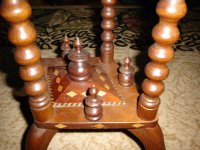 painting archive 051.JPG79.7 KB · Views: 6,977
painting archive 051.JPG79.7 KB · Views: 6,977 -
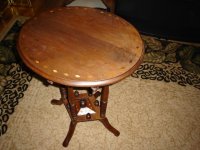 painting archive 049.JPG72.6 KB · Views: 7,006
painting archive 049.JPG72.6 KB · Views: 7,006 -
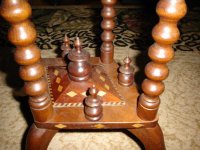 painting archive 051.JPG79.7 KB · Views: 7,007
painting archive 051.JPG79.7 KB · Views: 7,007 -
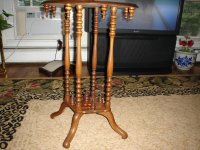 painting archive 050.JPG86.8 KB · Views: 6,986
painting archive 050.JPG86.8 KB · Views: 6,986 -
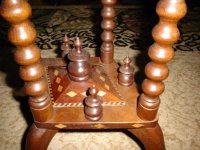 painting archive 051.JPG79.7 KB · Views: 6,980
painting archive 051.JPG79.7 KB · Views: 6,980 -
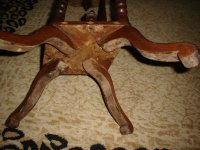 painting archive 053.JPG76.5 KB · Views: 6,947
painting archive 053.JPG76.5 KB · Views: 6,947 -
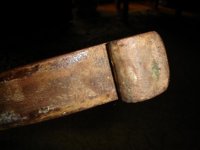 painting archive 055.JPG40.3 KB · Views: 6,916
painting archive 055.JPG40.3 KB · Views: 6,916 -
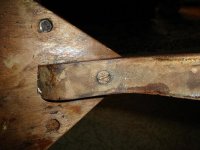 painting archive 056.JPG68.7 KB · Views: 6,895
painting archive 056.JPG68.7 KB · Views: 6,895 -
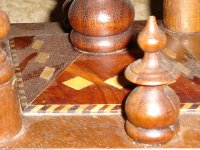 painting archive 058.JPG85.5 KB · Views: 6,872
painting archive 058.JPG85.5 KB · Views: 6,872 -
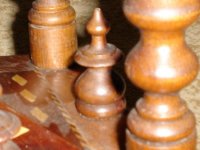 painting archive 059.JPG54.7 KB · Views: 6,799
painting archive 059.JPG54.7 KB · Views: 6,799 -
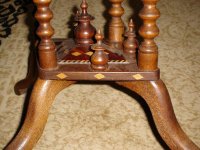 painting archive 060.JPG87.4 KB · Views: 6,768
painting archive 060.JPG87.4 KB · Views: 6,768 -
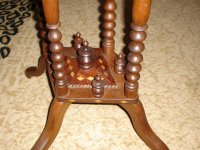 painting archive 061.JPG80.5 KB · Views: 6,720
painting archive 061.JPG80.5 KB · Views: 6,720 -
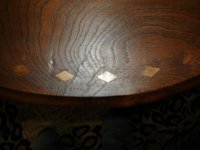 painting archive 063.JPG47.7 KB · Views: 6,653
painting archive 063.JPG47.7 KB · Views: 6,653
Upvote
1


 It's very cool and well done. While I'm no expert on furniture though I do tend to agree with the opinion that's it's not nearly as old as you think it might be. Get a couple of opinions from real experts. If it's not classified info what did you pay for it ? I do think it's kind of odd that you ask the good folks here for their opinion and then dissagree with the ones you don't want to hear. To me it dosn't look that old. Just my 2 cents worth.... The legs & the screw heads for one, don't look 18th century to me no matter how long ago wood screws were invented. The top to my tired old eyes, looks to be made from 4, possibly 5 seperate boards. While this may have been done to show off the different grains of the wood there were much bigger trees around in the 1700 & early 1800s and almost all table tops you see from that period are made from much wider boards. As far as making the banner the old timers can give a better answer than I can but I'm thinking they're going to tell you this ain't the "antiques road show" no matter how cool your garage sale find is. I could be wrong... If you find a secret compartment and open it & it's full of gold dubloons though I promise you'll get my vote..
It's very cool and well done. While I'm no expert on furniture though I do tend to agree with the opinion that's it's not nearly as old as you think it might be. Get a couple of opinions from real experts. If it's not classified info what did you pay for it ? I do think it's kind of odd that you ask the good folks here for their opinion and then dissagree with the ones you don't want to hear. To me it dosn't look that old. Just my 2 cents worth.... The legs & the screw heads for one, don't look 18th century to me no matter how long ago wood screws were invented. The top to my tired old eyes, looks to be made from 4, possibly 5 seperate boards. While this may have been done to show off the different grains of the wood there were much bigger trees around in the 1700 & early 1800s and almost all table tops you see from that period are made from much wider boards. As far as making the banner the old timers can give a better answer than I can but I'm thinking they're going to tell you this ain't the "antiques road show" no matter how cool your garage sale find is. I could be wrong... If you find a secret compartment and open it & it's full of gold dubloons though I promise you'll get my vote.. 




